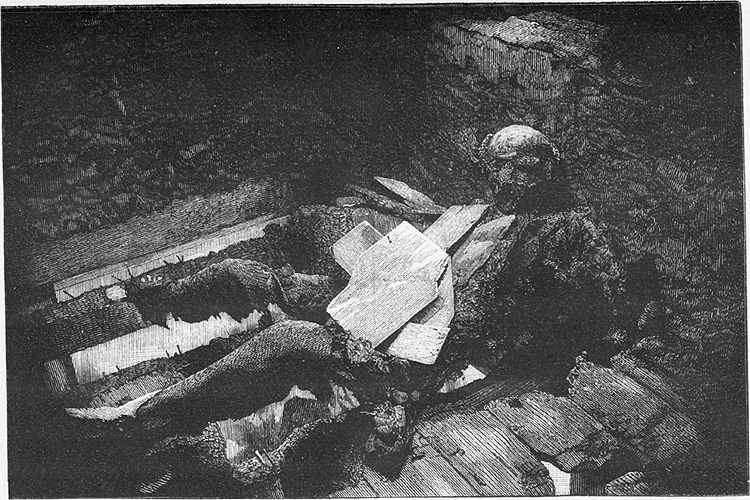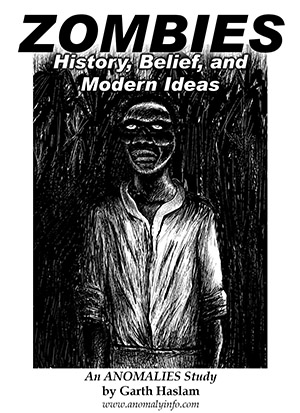1888, February 19: Alexander Morrison’s Fiery Death
Alexander Morrison, a 65 year old (or 53 year old; sources disagree) pensioner and former soldier living in Aberdeen, Scotland, was last seen alive at 9PM on Saturday, February 18, 1888, when he asked a young man and lady to shut the door of the stable he was sleeping in after him, which they did. He was intoxicated, which was not unusual for him; the young couple heard him ascend the ladder to the loft, saw a light go on in the skylight, and sometime later saw the light go out.
Between 8 and 9AM the following morning, the wife of the proprietor of the stables, who lived nearby, saw smoke coming from a hole in the roof of the loft; she told her husband, and he rushed over to check what had happened. Horrified by what he found, he called the police, and they in turn called a medical professional... to examine the remains of Alexander Morrison.
Dr. J. Mackenzie Booth, a lecturer at the University of Aberdeen, and physician to the Aberdeen General Dispensary, soon arrived on the scene. The first thing he noted was the same thing that the proprietor had seen... upon entering the stables, he looked up and saw the body of the old man through a hole in the ceiling. The body was being supported by the joists, and leaning against the stone wall. Once up the ladder, the curious scene only became stranger.

Alexander Morrison's remains [Larger version here]
The body was being supported by one joist and a bit of un-burned floor... and, despite a section of flooring around the body and an area in the ceiling above it all having been obviously burned away, the hay and wood in the loft near the body was undamaged. Several slates had fallen onto the body from the hole above. The body itself was almost entirely a cinder, which yet retained the general shape of the original body enough for Morrison's face and the wrinkles of his clothing to be clearly seen.
The greasy cinder that now formed Morrison's face and moustache were perfect enough for those who knew him in life to still recognize him in death. His hair and scalp were burnt away, exposing his skull. The front of the cinder body was overall intact except for the areas damaged by the falling slates; the back of the body showed no signs of clothing left, and the ribs, among other bones, were exposed to view. Booth assumed that this was due to the slate falling on the body, and conjectured that had he arrived before the slates fell, that the back of the cinder would have looked as almost perfect as the front. Both of the hands, and the right foot, had been burned off and fallen through the hole under the body into the stables below.
Unfortunately, Booth didn't get the opportunity to examine the internal organs of Morisson's remains; he wanted a picture to be taken of the body (from which the illustration above was produced), and by the time he returned from other work the remains had already been removed. The bearers told him that the body had basically fallen apart upon their attempt to move it.
Observations and Theories
Booth realized he was looking at one of the unusual fire deaths that, at that time, were highly discussed. These odd deaths were generally being attributed to one of two competing theories of how they occurred. The first idea was that of Spontaneous Human Combustion, the belief people could somehow ignite from the inside of their bodies, and then quickly burn to ashes. The second idea was that of Preternatural Combustibility, the belief that some people were just somehow easier to ignite and burn than average people were; this theory was often connected to a belief that high intake of alcoholic drinks, which burn readily, would lead to the drinker also being able to burn readily.
Booth came to a different conclusion based on what he saw in Morrison's death, however. Booth observed that Morrison's face was very relaxed in its appearance, rather than pained or alarmed; from this, he concluded that the old man had likely died quietly either before or after the fire started, and the fire then had all the time it needed to slowly convert the body to the state it was found in... it was very unlikely the fire was the direct cause of death, or there would have been signs of distress.
After some consideration, Booth came to the conclusion that Morrison's body fats were more than combustible enough to produce the damage he had seen. Booth also stated his belief that the only connection between alcohol and any form of fire death was that it made people less likely to handle fire well. Booth's conclusion is perhaps the earliest suggestion of what has since been dubbed the "Wick Effect," the belief that these strange deaths can be explained by burning body fat using an already dead victim's clothing as a form of candle wick, creating a small but intense flame that can break down even bones if given enough time uninterrupted.
A particular point of interest to me is that the illustration above, as I mentioned, is based on a photograph. Said photograph probably hasn't been seen since around the time of Morrison's death... I would love to find that photograph if it is still in existence! Also, a note of thanks goes out to Sue Raffan, who found a local Aberdeen article on Morrison's death, which supplied this victim's actual name... Booth's original account of the incident only referred to Morrison as "A.M.".
Anomalies -- the Strange & Unexplained, as well as my other website -- Monsters Here & There -- are supported by patrons, people like you! All new Anomalies articles are now posted for my patrons only, along with exclusive content made just for them. You can become a patron for just $1 a month!
|








